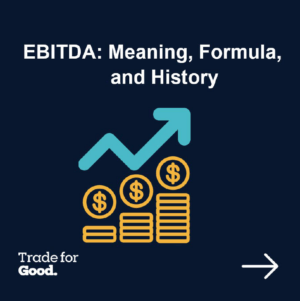 What is EBITDA?
What is EBITDA?
EBITDA, or earnings before interest, taxes, depreciation, and amortization, is an alternative measure of profitability compared to net income.
By excluding non-cash depreciation and amortization expenses, as well as taxes and debt costs related to the capital structure, EBITDA aims to represent the cash profit generated by the company’s operations

KEY TAKEAWAYS
- EBITDA is a widely used measure of core corporate profitability.
- EBITDA is calculated by adding interest, tax, depreciation, and amortization expenses to net income.
- EBITDA allows investors to assess corporate profitability net of expenses that depend on financing decisions, tax strategy, and discretionary depreciation schedules.

EBITDA Formulas and Calculation
There are two distinct EBITDA formulas, one based on net income and the other on operating income. The respective EBITDA formulas are:
EBITDA = Net Income + Taxes + Interest Expense + Depreciation & Amortization
and
EBITDA = Operating Income + Depreciation & Amortization
Understanding EBITDA
EBITDA can be used to track and compare the underlying profitability of companies, regardless of their depreciation assumptions or financing choices.
EBITDA is especially widely used in the analysis of asset-intensive industries with correspondingly high non-cash depreciation costs. In these sectors, the costs that EBITDA excludes may obscure changes in the underlying profitability.

Drawbacks of EBITDA
EBITDA’s calculation can vary from one company to the next, as companies can emphasize EBITDA over net income to make themselves look better.
Not reporting EBITDA can be seen as a red flag. This can happen when companies have borrowed heavily or are experiencing rising capital and development costs.

What Defines Earnings?
While subtracting interest payments, tax charges, depreciation, and amortization from earnings, different companies use different earnings figures as the starting point for EBITDA.
EBITDA is susceptible to the earnings accounting games found on the income statement. Even if we account for these distortions, the earnings figure in EBITDA may still prove unreliable.

You can download the offline guide here EBITDA

What you learn here has been used in our Trade for Good software.
Click on the button to find our software education videos.
You can read more of our educational articles in the Trade for Good Learn section
Trade for Good Learn





